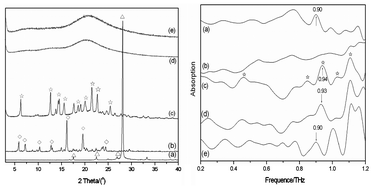Crystal engineering approach to produce complex of azelnidipine with maleic acid†
Abstract
A novel azelnidipine–maleic acid complex was prepared by the ![[double bond, length as m-dash]](https://www.rsc.org/images/entities/char_e001.gif) O from
O from

* Corresponding authors
a
School of Pharmaceutical Sciences and Laboratory Animal Science, Hebei Medical University, Shijiazhuang 050017, China
E-mail:
jingwang@home.ipe.ac.cn
Fax: +86 311-86266419
Tel: +86 311-86265627
A novel azelnidipine–maleic acid complex was prepared by the ![[double bond, length as m-dash]](https://www.rsc.org/images/entities/char_e001.gif) O from
O from

 Please wait while we load your content...
Something went wrong. Try again?
Please wait while we load your content...
Something went wrong. Try again?
W. Lian, Y. Lin, M. Wang, C. Yang and J. Wang, CrystEngComm, 2013, 15, 3885 DOI: 10.1039/C3CE26967A
To request permission to reproduce material from this article, please go to the Copyright Clearance Center request page.
If you are an author contributing to an RSC publication, you do not need to request permission provided correct acknowledgement is given.
If you are the author of this article, you do not need to request permission to reproduce figures and diagrams provided correct acknowledgement is given. If you want to reproduce the whole article in a third-party publication (excluding your thesis/dissertation for which permission is not required) please go to the Copyright Clearance Center request page.
Read more about how to correctly acknowledge RSC content.
 Fetching data from CrossRef.
Fetching data from CrossRef.
This may take some time to load.
Loading related content
